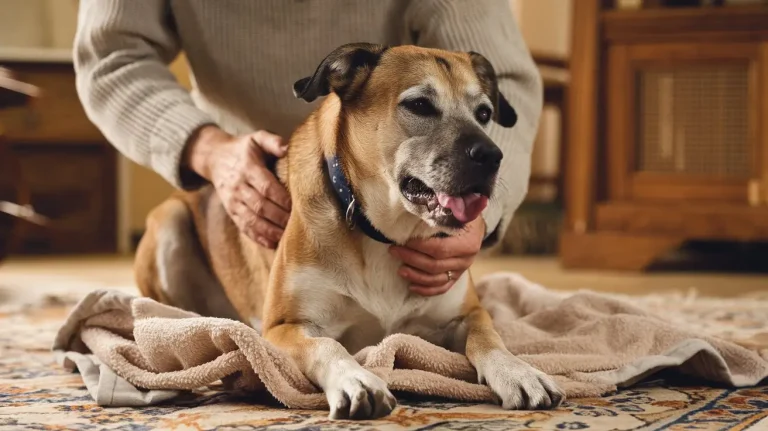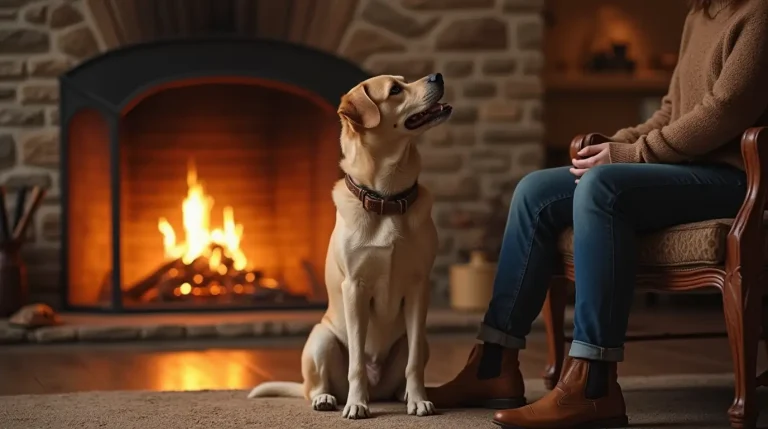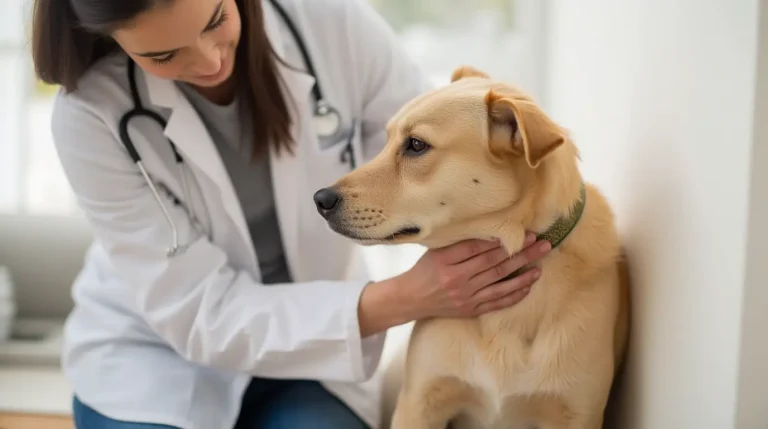Giardia in dogs treatment ,Giardia is a common parasitic infection that affects dogs worldwide. It is caused by the protozoan parasite Giardia intestinalis, which can cause gastrointestinal symptoms and discomfort for our furry friends. If left untreated, giardia can lead to dehydration and weight loss. Therefore, it is essential for dog owners to be knowledgeable about effective treatment options for giardia in dogs so they can provide prompt care and support for their beloved pets.
Table of Contents
Key Takeaways
- Treatment options for giardia in dogs include medications, dietary changes, and supportive care measures.
- Recognizing the symptoms of giardia, such as diarrhea and vomiting, is crucial for early detection.
- Veterinarians use various diagnostic methods to confirm giardia infection in dogs.
- Preventing giardia infection in dogs involves maintaining good hygiene and minimizing exposure to the parasite.
- Understanding the lifecycle of giardia can help dog owners implement effective prevention and treatment strategies.
Giardia in dogs treatment
Recognizing the Symptoms of Giardia in Dogs
Giardia is a common parasitic infection that can affect dogs of all breeds and ages. Early detection and prompt treatment are crucial for effectively managing this condition. One of the first steps in identifying giardia in dogs is understanding the symptoms to watch out for.
Symptoms of Giardia in Dogs:
- Intermittent or Persistent Diarrhea: Diarrhea is one of the hallmark symptoms of giardia infection in dogs. It can vary in severity, ranging from intermittent loose stools to chronic diarrhea.
- Weight Loss: Dogs infected with giardia may experience weight loss despite having a normal appetite. The parasite interferes with the absorption of nutrients from the intestines, leading to malnourishment.
- Lethargy: Giardia infection can cause dogs to become tired and weak due to the body’s decreased ability to properly absorb nutrients.
- Foul-Smelling Stools: Infected dogs may have stools with a noticeably unpleasant odor.
- Abdominal Discomfort: Dogs with giardia may exhibit signs of abdominal discomfort such as bloating or tenderness.
- Vomiting: Some dogs infected with giardia may also vomit, although this symptom is less common.
If your dog is exhibiting any of these symptoms, it is vital to consult with a veterinarian for a proper diagnosis. Other conditions can cause similar symptoms, so it is crucial to rule out other potential causes.
By recognizing the symptoms of giardia in dogs, dog owners can take the necessary steps to seek appropriate treatment and prevent the spread of the infection to other pets or humans. Prompt intervention is key to ensuring the well-being and recovery of your furry companion.
Diagnosing Giardia in Dogs
When it comes to diagnosing giardia in dogs, veterinarians employ various diagnostic methods to confirm the presence of this parasitic infection. Early detection is crucial for initiating prompt treatment and effective management.
The first step in diagnosing giardia in dogs is to conduct a thorough physical examination, closely assessing the dog’s overall health and well-being. During this examination, the veterinarian will inquire about any symptoms or behaviors that may indicate giardia infection.
In addition to the physical examination, veterinarians typically perform diagnostic tests to confirm the presence of giardia. These tests include:
- Fecal Examination: A fecal examination involves analyzing the dog’s stool samples to detect giardia cysts or trophozoites. The veterinarian examines the sample under a microscope, looking for the characteristic pear-shaped organism.
- ELISA Test: An Enzyme-Linked Immunosorbent Assay (ELISA) test detects giardia antigens in the dog’s stool sample. This test provides quick and accurate results, aiding in the diagnosis of giardia infection.
- PCR Test: Polymerase Chain Reaction (PCR) tests are highly sensitive and can detect even small amounts of giardia DNA in a dog’s stool sample. This test is often used for confirming giardia infection in cases where other diagnostic methods yield uncertain results.
Remember, to ensure accurate test results, it is recommended to collect multiple stool samples over several days. This is because the shedding of giardia cysts can be intermittent, and a single negative result does not rule out infection.
Once the diagnosis is confirmed, veterinarians can proceed with appropriate treatment and management strategies for giardia in dogs. By understanding the diagnostic process and seeking professional veterinary care, dog owners can ensure the health and well-being of their beloved pets.
| Diagnostic Method | Description |
|---|---|
| Fecal Examination | Microscopic analysis of stool samples to detect giardia cysts or trophozoites |
| ELISA Test | Detection of giardia antigens in the dog’s stool sample |
| PCR Test | Highly sensitive test that detects giardia DNA in stool samples |
Effective Giardia Treatment Options for Dogs
When it comes to treating giardia in dogs, there are several effective options available that can help eliminate the parasitic infection and bring relief to your furry companion. Treatment often involves a combination of medications, dietary changes, and supportive care measures tailored to the unique needs of each dog.
Medications
Medications play a crucial role in treating giardia in dogs. One commonly prescribed medication is **metronidazole**, which effectively targets and kills the parasite. Another medication that veterinarians may consider is **fenbendazole**, which is known for its efficacy in treating giardia infections. These medications are typically administered orally and should be used according to your veterinarian’s instructions.
Dietary Changes
Dietary changes can also aid in the treatment of giardia in dogs. Switching to a high-quality, easily digestible food can support your dog’s digestive system and overall health. Additionally, incorporating **probiotics** into your dog’s diet can help restore a healthy balance of gut bacteria, which can be disrupted by giardia infection.
Supportive Care Measures
In addition to medications and dietary changes, supportive care measures can help alleviate the symptoms associated with giardia infection. Provide your dog with clean and fresh drinking water to prevent dehydration. Regular bathing can also help remove any cysts that may be present on your dog’s coat and prevent reinfection.
“Prompt and appropriate treatment is crucial to effectively combat giardia in dogs and prevent the spread of the infection. By following your veterinarian’s recommendations and implementing a comprehensive treatment plan, you can help your dog recover and minimize the risk of reinfection.”
Remember, every dog is different, and the severity of the infection may vary. It’s important to consult with your veterinarian to determine the most suitable treatment options for your dog’s specific condition. With the right treatment and care, your dog can overcome giardia and return to a happy, healthy life.
Preventing Giardia Infection in Dogs
Prevention plays a crucial role in safeguarding your beloved canine companion against giardia infection. By implementing simple yet effective measures, you can significantly reduce the risk of your dog contracting this parasitic infection. Here are some important tips to help you keep your dog safe and healthy:
1. Maintain Good Hygiene
Institute a regular grooming routine for your dog, including bathing and thorough drying. **Cleanliness** is key to preventing giardia, as the parasite can thrive in damp environments. Keep your dog’s living area clean and free from fecal matter, as it can contain giardia cysts.
2. Practice Proper Waste Disposal
Always promptly clean up after your dog and dispose of the waste properly. Bagging and discarding waste in designated trash receptacles helps prevent the spread of giardia in the environment. Remember, **feces** containing giardia cysts can contaminate soil and water sources, posing a risk to other animals and humans.
3. Provide Clean Drinking Water
Ensure your dog has access to clean, fresh drinking water at all times. Avoid allowing your dog to drink from stagnant water sources, such as puddles or stagnant ponds. These water sources may contain giardia cysts that can infect your dog.
4. Avoid Contact with Potentially Contaminated Areas
Avoid letting your dog roam freely in areas known to be contaminated with giardia, such as dog parks or areas heavily frequented by other animals. **Limiting exposure** to high-risk environments helps reduce the chances of giardia transmission.
5. Practice Good Personal Hygiene
After handling your dog or cleaning up after them, it’s important to thoroughly wash your hands with soap and water. This simple hygiene practice helps prevent the transmission of giardia and other potential pathogens to yourself and others.
6. Regular Veterinary Check-ups
**Regular veterinary check-ups** are essential for your dog’s overall health and well-being. During these visits, your veterinarian can assess your dog for any signs of giardia or other health issues. They can also provide guidance on preventive measures specific to your dog’s individual needs.
Comparing Preventive Measures for Giardia Infection in Dogs
| Preventive Measure | Description |
|---|---|
| Maintain Good Hygiene | Regular grooming, cleanliness of living areas, and proper drying |
| Practice Proper Waste Disposal | Promptly clean up waste and dispose of it in designated trash receptacles |
| Provide Clean Drinking Water | Ensure access to fresh, clean drinking water and avoid stagnant water sources |
| Avoid Contact with Contaminated Areas | Restrict access to high-risk environments such as dog parks |
| Practice Good Personal Hygiene | Thoroughly wash hands after handling dogs or cleaning up after them |
| Regular Veterinary Check-ups | Schedule routine visits to assess overall health and receive expert guidance |
Understanding the Lifecycle of Giardia
Giardia is a microscopic parasite that can cause gastrointestinal infections in dogs. To effectively combat this common parasitic infection, it is essential for dog owners to understand the lifecycle of giardia and how it infects both dogs and the environment.
The lifecycle of giardia begins with the ingestion of cysts, which are the dormant and highly resilient form of the parasite. Dogs can become infected by consuming contaminated water, food, or objects that have been contaminated by the cysts. Once ingested, the cysts travel to the dog’s small intestine where they transform into active trophozoites.
The trophozoites attach themselves to the lining of the small intestine and multiply rapidly. This results in inflammation and damage to the intestinal lining, leading to the characteristic symptoms of giardia infection in dogs such as diarrhea, vomiting, weight loss, and poor appetite.
As the trophozoites continue to multiply, some of them transform back into cysts. These cysts are then passed out in the dog’s feces, allowing them to contaminate the environment. The cysts can survive for extended periods outside the host and are resistant to disinfectants, making them highly resilient.
When another dog comes into contact with the contaminated environment, either by ingesting the cysts or through direct contact with contaminated objects, the lifecycle of giardia begins again. This cycle continues, leading to the spread of giardia from one dog to another, especially in multi-dog environments.
Understanding the lifecycle of giardia is vital for implementing effective prevention and treatment strategies. By reducing exposure to contaminated environments, practicing good hygiene, and following veterinarian-recommended preventive measures, dog owners can minimize the risk of giardia infection in their furry companions.
Managing Giardia Infection in Multi-Dog Environments
In households or kennels with multiple dogs, managing giardia infection requires careful attention and strategic measures. Cross-contamination can easily occur, leading to the spread of the parasite among the canine residents. To ensure comprehensive treatment and prevent re-infection, dog owners should implement the following strategies:
1. Strict Hygiene Practices
Adhering to strict hygiene practices is crucial for preventing the spread of giardia in multi-dog environments. Dog owners should:
- Regularly clean and disinfect all dog bedding, toys, and feeding bowls.
- Thoroughly wash their hands after handling infected dogs or their feces.
- Keep the living area clean and free from excessive fecal matter.
By maintaining good hygiene, dog owners can minimize the risk of giardia transmission among their furry companions.
2. Individualized Treatment
Each infected dog in a multi-dog environment should receive individualized treatment to ensure effective eradication of the parasite. Dog owners should:
- Administer prescribed medications as directed by the veterinarian.
- Monitor each dog’s response to treatment and consult the veterinarian if necessary.
Customizing the treatment plan for each dog increases the likelihood of successful recovery and reduces the chances of re-infection.
3. Preventing Cross-Contamination
To prevent cross-contamination and further spread of giardia, dog owners should:
- Isolate infected dogs from healthy ones during the treatment period.
- Prevent infected dogs from accessing communal water sources, such as shared water bowls or ponds.
- Implement a strict stool management system, promptly disposing of feces to avoid environmental contamination.
By implementing these preventive measures, dog owners can protect the entire canine population from giardia infection.
“Proper hygiene practices and individualized treatment are essential in managing giardia infection when multiple dogs are present. Preventing cross-contamination and diligently following veterinarian instructions can help eradicate the parasite and protect all the furry residents.”
4. Regular Testing and Follow-up
Periodic testing and follow-up are crucial in multi-dog environments to ensure the complete eradication of giardia and prevent re-infection. Dog owners should:
- Schedule regular check-ups with the veterinarian to monitor the dogs’ overall health and follow-up on treatment progress.
- Conduct regular fecal examinations to detect any residual giardia in the dogs’ stool samples.
Continuous monitoring and testing are essential for maintaining a giardia-free environment and protecting the well-being of all the dogs.
5. Communication with Other Dog Owners
In multi-dog environments, open communication with other dog owners is vital to prevent the spread of giardia. Dog owners should:
- Inform other dog owners about the presence of giardia and the ongoing treatment in the environment.
- Encourage all dog owners to follow proper hygiene and treatment protocols.
Collaboration among dog owners can significantly reduce the risk of giardia transmission and create a safe and healthy environment for all the dogs.
| Strategy | Description |
|---|---|
| Strict Hygiene Practices | Regularly clean and disinfect dog bedding, toys, and feeding bowls, wash hands after handling infected dogs or their feces, and keep the living area clean. |
| Individualized Treatment | Administer prescribed medications to each infected dog and monitor their response to treatment. |
| Preventing Cross-Contamination | Isolate infected dogs, prevent access to communal water sources, and implement a strict stool management system. |
| Regular Testing and Follow-up | Schedule regular check-ups and conduct fecal examinations to monitor the dogs’ health and treatment progress. |
| Communication with Other Dog Owners | Inform other dog owners about giardia presence and treatment, and encourage hygiene and treatment compliance. |
Conclusion
Throughout this article, we have explored the key aspects of giardia in dogs, including its symptoms, diagnosis, treatment, and prevention. Prompt detection and treatment are crucial in managing giardia infections and ensuring the well-being of our canine companions. By recognizing the symptoms **of giardia in dogs** and consulting with a veterinarian, dog owners can take proactive steps towards effective treatment.
Giardia in dogs can manifest with various symptoms, such as diarrhea, vomiting, and weight loss. Understanding these signs is essential for early intervention and preventing complications. Diagnosing giardia involves a combination of tests, such as fecal exams and antigen testing, **for diagnosing giardia in dogs**. It is important to follow the veterinarian’s guidance for accurate diagnosis and a tailored treatment plan for your dog.
When it comes to giardia treatment for dogs, there are a range of options available, including medication, changes in diet, and supportive care. The treatment approach will depend on the severity of the infection and the specific needs of the dog. Additionally, adopting preventive measures, such as practicing good hygiene, minimizing exposure to contaminated water sources, and maintaining a clean living environment, **giardia prevention in dogs**, can help reduce the risk of giardia infection.
In summary, early detection, prompt treatment, and preventive measures are key in managing giardia infections in dogs. By staying informed about the symptoms **of giardia in dogs** and working closely with a trusted veterinarian, dog owners can effectively combat this parasitic infection and ensure the overall health and well-being of their furry friends.
FAQ
What are the common symptoms of giardia in dogs?
The most common symptoms of giardia in dogs include diarrhea, vomiting, weight loss, abdominal pain, and lethargy.
How is giardia in dogs diagnosed?
Giardia in dogs is typically diagnosed through fecal testing. A veterinarian will examine a stool sample for the presence of giardia cysts or antigens.
What are the effective treatment options for giardia in dogs?
The treatment options for giardia in dogs usually include medication such as metronidazole or fenbendazole, along with supportive care measures like hydration and maintaining good nutrition.
How can giardia infection be prevented in dogs?
To prevent giardia infection in dogs, it is essential to practice good hygiene. This includes regular cleaning of the dog’s living area, proper disposal of feces, and minimizing exposure to potentially contaminated water sources.
What is the lifecycle of giardia and how does it infect dogs?
Giardia has a complex lifecycle that involves two main stages: the cyst and the trophozoite. Dogs become infected when they ingest the cysts, usually through contaminated water, food, or surfaces.
How can giardia infection be managed in multi-dog environments?
In multi-dog environments, it is crucial to treat all dogs simultaneously to prevent cross-contamination. Regular cleaning and disinfection of common areas, as well as practicing good hygiene, can help manage giardia infection in such settings.
Where can I find more information on giardia in dogs?
For more information on giardia in dogs, it is best to consult with your veterinarian. They can provide personalized guidance, recommend appropriate treatment options, and answer any specific questions you may have.





